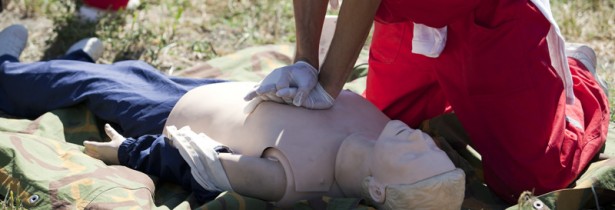“Safety never takes a holiday”. Truly, safety is the most important aspect of our lives. Following safety procedures is everyone’s responsibility. Can you imagine a day when someone knocks your door to inform that your loved one is in hospital in a serious condition, as the result of an accident? This is really heartbreaking news. Most accidents happen because they have not been prevented. So, taking health and safety training is very important to lead a safe and happy life. Employers must pay a lot of attention to manage health and safety at work to prevent accidents and ill health.
Fire accidents can strike anywhere and at anytime. Employees should undergo basic fire safety training because these accidents are expected to occur annually in most workplaces. Having ideas on fire safety tips is very important so as to prevent the likelihood of a fire that may result in injury, property damage or even death. There are many safety tips that employees should keep in mind which help them while fire accidents. Some of them are as follows:
-
After noticing a fire, you should immediately call to a fire department. The sooner they come to know the faster they approach
-
Employees should know exactly where the fire extinguishers are located, as well as how to use them
-
Shout for help loudly
-
Keep in mind that you should not use elevators during fire accidents. This is because if the power fails, you are stuck in the elevator with no means of escape
-
If you find any papers or any other clutter lying on the floor, immediately throw them out as they spread the fire more quickly
-
If your building is in fire check, you need to check before opening. If you feel any heat, then do not open that door
-
Switch off all the electrical appliances
-
Do not disturb the fire team during fire fighting
-
Do not form into groups because it is difficult for the fire fighters to perform their tasks
Health and safety training effectively prevents the workplace accidents and injuries. Today, most of the business organizations are providing the best safety management systems as they understood the significance of the health and management that leads to:
-
Cost reductions
-
Improved employee relationships
-
Improved public image
-
Increase in the business productivity and reliability
Fire accidents are extremely deadly if you do not take proper precautions. As a business manager, you need to set up the health and safety notice board and keep it updated. Organize these health programs for your staff to reduce the hazards at your workplace and develop a safety action plan.
Author Bio: – Melvin is a medical student and is pursuing a firstaid course Glasgow. Apart from his studies, he likes to invest his time visiting patients in hospitals and clinics. He also likes to make general awareness on keeping health fit through his posts.
